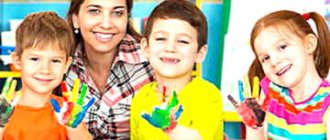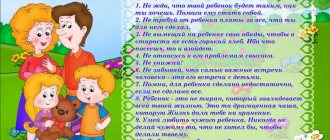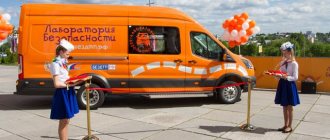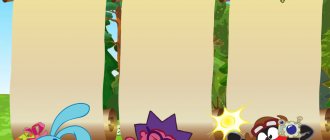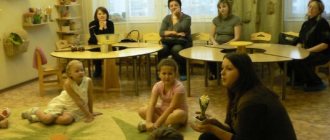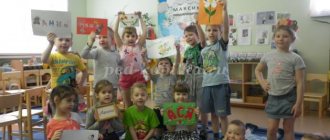How to prepare a consultation
When organizing consultation work with parents in a preschool educational institution, the teacher must first of all remember that the educational institution does not replace the child’s relatives, but turns them into its allies.
The main goal of such activities is to help the mother and father in the development of the child. Collaborative work is based on the principles of openness and the development of common approaches to raising a child. One of the important tasks is to increase the level of pedagogical competence of parents in the field of children’s physical development.
Forms of work with families in preschool institutions are divided into collective and individual.
Consultations belong to traditional differentiated forms of work.
- The focus is educational.
- Interaction is active.
- The goal is professional answers to parents’ questions and expert advice.
At the same time, consultation is a modern, effective method of working with parents that meets the recommendations of the Federal State Educational Standard for Education.
Various specialists can provide consultations on physical education in kindergarten:
- physical development instructor;
- Methodist;
- medical worker;
- teacher
Consultation can take various forms:
- teacher's speech;
- discussion of the problem;
- conversation on material previously proposed for familiarization.
Consultations are carried out:
- collectively;
- individually;
- in person;
- in absentia.
Collective consultations can be organized both for all parents of the group and for a small group of adults.
According to the Federal State Educational Standard, working with parents for a physical education instructor at a preschool educational institution is one of the main directions. The teacher introduces the age-related characteristics of the physical development of children and the specifics of the approach to physical education classes within the framework of the educational program adopted in the preschool institution.
The topics of the consultations arise from the annual work plan and the specific needs of the educational and training processes. If it is necessary to conduct an unscheduled consultation, its focus is also approved by the head of the preschool institution.
The topic and timing of the consultation are communicated to parents in advance.
The material is selected so that it is:
- full of useful information;
- clearly and interestingly presented;
- easy to understand.
In addition, he must:
- contain new information;
- encourage parents to work together.
The consultation should not last too long, so the material is structured in advance, conclusions and recommendations are written down.
In order for the work to be effective, it is necessary to prepare both visual material and printouts with general information and tips.
Consultation for parents “Physical education in kindergarten”
Educational work in kindergarten is built around the most important thing - strengthening the health of children. This includes not only good physical development, but also resistance to disease, endurance, and self-confidence.
An important condition for a child's growth
Babies' need for movement is very high. This is due to the characteristics of age-related physiology. But nowadays, many children prefer playing with a tablet to sports exercises. This affects not only health and performance, but also psychological well-being.
This means that our task is to teach the child to consciously compensate for the lack of movement through sports. As a future adult, these habits will turn out to be extremely useful, because a strong body will quickly adapt to any difficulties: stress, high pace and unusual living conditions.
Therefore, health work in the kindergarten is aimed at the following goals:
- promoting children's health;
- full physical development;
- improving motor skills;
- formation of the need for a healthy lifestyle.
How are classes conducted?
Physical education is carried out 3 times a week. In the summer, everything is outdoors. If it's cold, two classes take place indoors and one outside.
Classes are planned taking into account the age characteristics of children.
In order to interest the children, the forms of the event are constantly changing:
- traditional in the gym (or on the site);
- gaming (with a plot);
- thematic;
- non-traditional (rhythmic);
- in the form of sports games;
- complex (for example, together with a music worker).
Classes are structured so that children have fun. Therefore, the whole process is based on the game. A situation is always thought out that involves the children in an interesting action, during which they develop dexterity, accuracy, coordination of movements and other skills.
Coercion is not allowed. However, in play, children learn to follow the rules and get used to discipline. In addition, in sports games they learn to achieve victory, suffer defeat, and act as a team.
Requirements that must be met when conducting physical education classes:
- age appropriate;
- taking into account the physical development and health status of each child;
- load rationing;
- alternating physical activity with rest;
- medical control.
Goals and tasks gradually become more complex, movements are improved. The physical education instructor and teacher not only teach the kids, but also provide them with safety nets while performing exercises.
Physical education in kindergarten is not limited to just classes. Required:
- morning exercises;
- daily recreational walking (or running);
- physical education minutes in every lesson;
- walks;
- sports holidays.
Sports events in kindergarten are held with the participation of parents. This brings great joy to the children, and provides invaluable assistance in fostering a love for sports. The kindergarten expects that mothers and fathers and grandparents will respond to invitations. The kids' gratitude, fun and great photos are guaranteed.
It’s great if the baby plays sports at home with mom and dad: do exercises, play outdoor and sports games.
Advice from a physical education instructor
A healthy child is the happiness of parents
Unfortunately, he cannot become like this himself. You need to work with the child.
Early age is an important period in the formation of personality, the period when the foundations of physical health are laid. What is missed in childhood is difficult to make up for. It is very important to teach your child in time to walk, run, jump, crawl, handle various objects, use hands and fingers, perform movements in accordance with the text, and manage muscle tension.
Movement is the basis for the perception and processing of information about the surrounding world. It is in the process of movement, accompanied by words, songs, jokes, music, that the tasks of the child’s speech development are solved:
-progresses understanding of speech;
-the active dictionary is enriched;
- phrase formation begins;
- visual and effective thinking becomes more complicated;
-natural development of the muscular system and motor skills occurs;
-the emotional-volitional sphere is formed.
The level of development of motor skills of a young child is an indicator of normal or pathological development.
Morning exercises promote an active transition from sleep to wakefulness. It allows you to maintain vigor and performance throughout the day. No wonder they say: “Do exercises every day - fatigue, lethargy, laziness will go away!” Finally, morning exercises are the first step towards sports.
Morning exercises are the most accessible type of physical education for everyone. You can do it yourself, but physical exercise in a group, with parents, and the whole family is more interesting, more fun, and more productive.
“I need to move a lot”
Support your child in his desire to be active and create conditions for this. It is movements that make a child resilient, dexterous, and quick-witted.
How much should a healthy child move during the day? Physical activity depends on individual characteristics. Children with average activity, as a rule, do not cause anxiety in parents: their behavior is balanced, they do not overwork, such a child runs and jumps as much as he can.
Another thing is children with increased activity. They are not balanced, cannot regulate their behavior, quickly become overtired, and are not inclined to perform exercises that require precision and coordination. Under no circumstances should you abruptly stop your child’s physical activity. The transition should be gradual.
Inactive children do not tend to run a lot; they prefer to play in the sandbox, which suits parents quite well. However, you need to know that such children develop motor skills more slowly. They lack dexterity and endurance, and avoid active games with peers.
How to make a child want to move? The joint activity of children and adults will help solve this problem (offer to catch up with you). Toys (ball) activate the baby's actions well. Don't waste time, start teaching your child basic movements. First of all, create the conditions! The baby should have a variety of toys and aids at his disposal (rollers, cars, crates and boxes, oilcloth tracks, inflatable logs, balls...).
Movement requires space. Designate a place in the room where your baby can move freely.
It is also necessary to conduct special classes, involve the child in participating in outdoor games, and do morning exercises with him.
What sports can you do in winter?
It is best to master certain elements of sports activities with your parents. When walking with your child, give him the opportunity to run and jump freely. Combine walks with seasonal sports.
All children have access to skiing (on flat terrain, as well as skiing down small sloping hills). When descending, the child glides simultaneously on both skis, legs slightly bent at the knees, hands with poles simultaneously extended forward.
By the age of 4, a child can be taught to put on and take off skis. The duration of ski trips is 20 minutes at first, and then the child gets used to it a little, they can last 40-50 minutes.
On walks, you can use “towing” (the baby stands on skis, and the parents - dad and mom - pull him by sticks or a rope, pretending to be a steam locomotive with carriages or a tug with a barge).
Sledding is the most accessible fun entertainment, an accessible form of physical education. When climbing a hill with a sled, a child performs significant muscle work, and the skating itself is enjoyable.
Swimming is a powerful hardening factor and a means of physical education. If your child has not visited the pool at the clinic before (the slogan of raising children now is “swimming before walking”), then you can teach children to swim from the 4th year of life. In children at risk of poor posture, the breaststroke style is preferable.
What kind of sport can you do in the summer?
It is best to master certain elements of sports activities with your parents.
In the summer, you can teach your child to roller skate on an asphalt path (from 5 years old!). In this case, it is necessary to protect the child’s head with a helmet, and the elbow and knee joints with special protective pads.
A bicycle helps strengthen muscles, train balance, improve coordination of movements, and fosters courage and determination. From the age of 4 you can teach your child to ride a bicycle.
How to determine whether a bicycle is suitable for a child's height?
For a child 4–5 years old, the distance from the seat to the pedal lowered down, the vertical distance from the steering wheel to the seat should not be more than 18 cm.
When teaching children to ride a bicycle, it is necessary to instill in them attention and discipline when riding, and to familiarize them with the rules of the road. It is important to ensure correct riding position and posture. To prevent postural disorders, it is recommended to take breaks from skating, during which it is advisable for the child to engage in outdoor games.
Long-term cycling is not recommended for children with poor posture, nor is it recommended for children at high risk of scoliosis.
Let's get on skis
How not to miss (not ignore) poor posture?
Home stadium
Physical education as disease prevention
ds14-arz.ru
